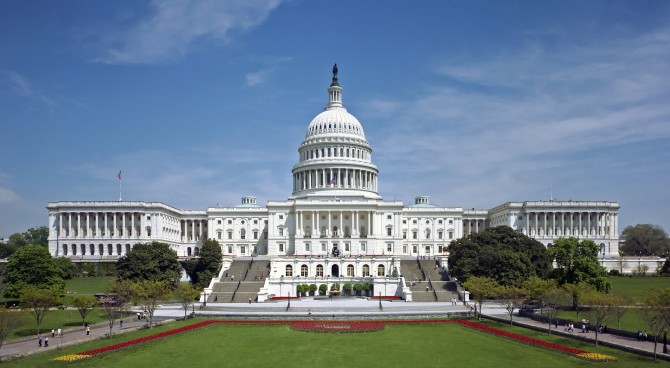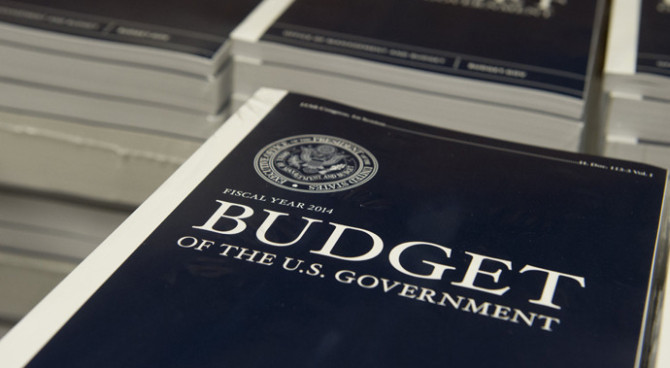Divided government doesn’t have to be a prescription for stalemate. Past bipartisan achievements point the way.
By Phil Gramm and Michael Solon
Dec 15, 2014
After his re-election to become the next majority leader of the Senate, Mitch McConnell‘s first words were not about his or his party’s wins but rather about America’s winning formula. Recalling that the nation’s legacy of strong economic growth has long coexisted with a tradition of divided government, Sen. McConnell suggested that the new Congress should try to replicate the bipartisan achievements of Ronald Reagan and Bill Clinton that delivered the most prosperous times in the past half-century.
Given the sharply competing visions of a new Republican Congress and a Democrat president, it seems unrealistic to hope that America can unite behind new and untested policies, which would almost certainly die in a partisan crossfire. Instead, Sen. McConnell wisely recognized that people have confidence in what has worked in the past.
The prosperity Americans enjoyed under Presidents Reagan and Clinton was achieved under divided governments and started following recessions that occurred the year before or the year after their elections. Reagan faced a higher unemployment rate, 10.8% in December 1982, than Barack Obama has ever faced. Reagan’s dramatic recovery had to overcome very restrictive monetary policy, while President Obama’s disappointing recovery has had the tailwind of the most expansive monetary policy of the postwar period.
Economic growth slowed to 3.1% at the start of the Clinton presidency but surged to 4.3% after the Republican Congress and Democratic president moved beyond government shutdowns and implemented a bipartisan program in 1997 to restrain government spending and stimulate private investment with a capital-gains tax cut. To put the magnitude of the Reagan and Clinton economic-growth surges into perspective, if Mr. Obama’s recovery had been as strong as the average of the Reagan-Clinton recoveries, per capita GDP would be $6,678 higher and 15.8 million more Americans would be at work today.
While Reagan’s 1981 budget and tax cuts passed with some Democrat support, two other achievements were strong bipartisan efforts from beginning to end.
The first was in 1983, when Reagan worked with Democrat House Speaker Tip Neill to avert the imminent insolvency of Social Security and gradually raised the retirement age to 67 from 65. Such a bipartisan effort today could begin with President Obama’s proposal to change the consumer price index now used to adjust Social Security benefits for inflation so the CPI more accurately measures the impact of inflation on purchasing power. President Clinton made similar changes to the CPI in 1998. That change alone would strengthen Social Security and reduce the deficit by $232 billion over the next decade. Additionally, everyone knows that Social Security’s normal retirement age must gradually be raised to 70 from 67, and the sooner this happens, the more secure everyone’s benefits will be.
The second bipartisan effort was a revenue-neutral tax reform in 1986 that lowered the top marginal tax rate to 28% from 50%, consolidated 14 different rates into two tax brackets, reduced special-interest provisions, increased efficiency and spurred economic growth. The law passed with strong support from Democrats like Bill Bradley and Dick Gephardt, and the votes of 70% of Democrats in the House and Senate. The tax reform gave a second wind to the 1982 expansion. A similar reform today would spur growth and swell revenues.
President Clinton faced a Republican Congress for his final six years. This did not preclude achieving a bipartisan reform of federal welfare in 1996 and the Balanced Budget Act in 1997. Repeating the 1997 BBA spending restraint agreed to by President Clinton and the GOP Congress, adjusted for the size of today’s government, would save $1.9 trillion over the next decade.
The Congressional Budget Office projected in 1996 that the balanced budget plan would generate a “fiscal dividend†of some $254 billion in total deficit reduction during 1996-2002, but the CBO later found that the actual deficit reduction from surging revenues alone totaled $1.267 trillion, five times the original projection. This triggered a balanced budget much sooner than anyone forecast and huge, totally unexpected budget surpluses.
With an economy averaging just 2% growth since the recovery began in 2009, the CBO estimates the federal government has lost some $5.4 trillion in its 10-year revenue projections since 2007. Until this failed recovery, every recovery in the postwar period had fully recaptured all the revenues that were lost in the previous recession. If the recovery spawned by replicating the Balanced Budget Act of 1997 and the 1986 tax reform recaptured one third of the revenues we have lost in the present recovery, the 10-year deficit would fall by $1.8 trillion.
Similarly, welfare reform could be replicated by restoring the work requirements and time limits that have been waived through state exemptions and by applying them to the other 79 means-tested programs. If, through a strong recovery and enhanced incentives, we could reverse half the increase in welfare spending that has occurred since the subprime-mortgage crisis, we could save $731 billion in the next decade.
The North American Free Trade Agreement was ratified when Democrats controlled both houses of Congress, but more Republicans voted for it than Democrats. Replicating the Clinton-GOP success in passing Nafta with the U.S.-EU and the Trans-Pacific Partnership free-trade agreements would promote growth and jobs.
Listening to what voters said in the 1994 elections and “triangulating” to take America where it wanted to go, President Clinton put into place a bipartisan program that created jobs, growth and a balanced budget. Reagan never signed a major bill that achieved all he wanted, but he got enough to change America and the world. Bipartisan consensus under both presidents promoted broad-based prosperity, with average growth rates of 4.4% in the final six years of the Clinton and Reagan presidencies.
And these were undeniably and overwhelmingly bipartisan efforts, with 66% of the Democrats in Congress joining 84% of Republicans to pass Social Security reform, tax reform, the Balanced Budget Agreement, welfare reform and Nafta.
Simply replicating the bipartisan successes of the Reagan-Clinton era today could spur growth and balance the budget over the next 10 years. Despite having to contend with a divided government, Ronald Reagan and Bill Clinton were able to deliver public policies that gave Americans what they wanted most–more jobs and more opportunity. We were a very great nation then partly because, despite all their differences, Presidents Reagan and Clinton put America first and their leadership inspired Congress to do the same.
Mr. Gramm, a former senator from Texas, is a visiting scholar at the American Enterprise Institute. Mr. Solon was budget adviser to Senate Republican Leader Mitch McConnell and is currently a partner at US Policy Metrics.



